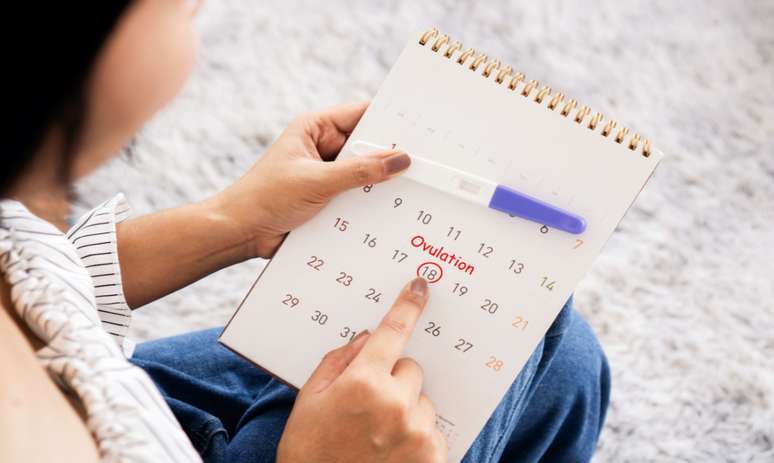These are explanations and advice so that an athlete’s performance is not affected.
Do you appreciate an active physical life to the point of defining this moment as the best time of the day? Wonder! This consistency will help your health. However, even so, some problems can harm your well-being. Such as, for example, breathing incorrectly during physical activity. Therefore, with the help of otolaryngologist Dr. Alexandre Felippu, we have separated some of the effects of this practice. And how to solve the problem. Watch:
html[data-range=”xlarge”] figure image img.img-dd6b21ef6384220b57f3092fe8996c21aggq6mep { width: 774px; height: 435px; }HTML[data-range=”large”] figure image img.img-dd6b21ef6384220b57f3092fe8996c21aggq6mep { width: 548px; height: 308px; }HTML[data-range=”small”] figure image img.img-dd6b21ef6384220b57f3092fe8996c21aggq6mep, html[data-range=”medium”] figure image img.img-dd6b21ef6384220b57f3092fe8996c21aggq6mep { width: 564px; height: 317px; }HTML[data-range=”small”] .article__image-embed, html[data-range=”medium”] .article__image-embed {width: 564px; margin: 0 automatic 30px; }
7 effects of incorrect breathing on physical exercise
1. Lack of adequate oxygenation
“Improper breathing can result in less oxygen being supplied to the lungs and, consequently, to the working muscles. This can then lead to faster fatigue and an inability to maintain the desired level of exercise intensity,” explains Alexandre , who is also a specialist at the ABR (Brazilian Academy of Rhinology) and a member of the ABORL-CCF (Brazilian Association of Otolaryngology and Head and Neck Surgery).
2. Accumulation of lactic acid
“Inadequate breathing can lead to excessive accumulation of lactic acid in the muscles. After all, the accumulation of lactic acid is associated with a burning sensation in the muscles and can cause discomfort and reduced performance during exercise,” explains Felippu.
3. Increased heart rate
In short, heart rate is the number of times the heart beats per minute, and this beating rate varies from person to person. Improper breathing therefore increases the rate, which can be harmful to those exercising.
“Inadequate breathing can increase the heart rate, as the body needs to work harder to obtain the amount of oxygen necessary to sustain physical effort,” adds the otolaryngologist.
4. Decreased performance
Are you an amateur or professional athlete? It’s time to overhaul the way you breathe if you want to feel like a complete athlete. “The lack of adequate oxygenation and the accumulation of lactic acid can lead to a reduction in physical performance, preventing the practitioner from reaching his maximum potential”, comments the doctor.
5. Stress increases
“Improper breathing can lead to increased stress on the body, as the respiratory and cardiovascular systems have to work harder to compensate for the lack of oxygenation,” he points out.
6. Accidents occur frequently
In this case, muscle and joint injuries are the “champions.” “Inadequate breathing can lead to less stability of the ‘core muscles’ during exercise, increasing the risk of muscle and joint injuries,” she says.
7. Reduced lung capacity
“Improper breathing can lead to inefficient use of the lungs, which in the long term can lead to a reduction in lung capacity,” guarantees Dr. Alexandre Felippu.
How to breathe correctly during physical activity
“Although nasal breathing is very beneficial, it is important to remember that in high-intensity activities or when more oxygen is needed quickly, breathing through the mouth can be a natural response of the body. However, in moderate activities such as walking , yoga, stretching exercises and resistance training, nasal breathing can be particularly useful in maximizing the benefits of exercise and improving overall well-being. As always, regular practice and guidance from trained professionals can help improve technique nasal breathing during exercise”, replies the professional.
Research
A study published by the European Journal of Allergy and Clinical Immunology in 2021 states that breathing through the nose contributes only 10% of minute ventilation at maximum intensity of an exercise. The airways perform an important function at this time.
Therefore, during exercise, the body requires a rapid and large flow of oxygen. This is why breathing moves towards the mouth as it has a larger diameter and provides quicker access to the lungs. Which begins to play a fundamental role in this new respiratory cycle.
“During sporting activity, the respiratory rate increases. Because the demand for oxygen and the elimination of carbon dioxide increase in proportion to the intensity of the exercise. Automatically, the regulatory mechanism regulates the respiratory function, favoring an increase in the inflow and the outflow of air through the respiratory tract. Nasal breathing also plays an essential role in recovery from physical effort and sleep. It helps muscle adaptation for the next training session”, concludes Dr. Alexandre Felippu.
Source: Terra
Ben Stock is a lifestyle journalist and author at Gossipify. He writes about topics such as health, wellness, travel, food and home decor. He provides practical advice and inspiration to improve well-being, keeps readers up to date with latest lifestyle news and trends, known for his engaging writing style, in-depth analysis and unique perspectives.









